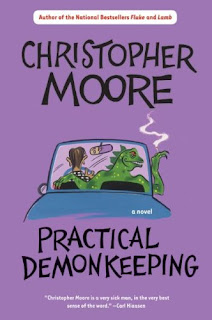
The Kite Runner is a popular book, a Very Important book, a best-selling book. So I will make fun of it. Be warned.
One movie critic, writing of the film adaptation of the book, writes that "every character harbors shades of gray". Really? Every character?
Hassan walks, talks, breathes, and lives Lawful Good. He doesn't have a shred of badness in him. He almost literally cannot tell a lie. Except for that one time, in the book's most critical scene, when he does tell a lie, because he is so fundamentally good it's all he can do.
Assef is almost a cartoon caricature of evil. I'm not just saying evil is encoded in his DNA; I'm saying that if scientists were to examine his nail clippings, they'd find evil extending all the way down to the subatomic level. The only reason I write that he's "almost" a cartoon caricature of evil is because I am well aware that even the more astonishing aspects of his character are not unrealistic.
I want to mock this book for the fact that the characters in it ought to be able to deduce that they're fictional characters by the amount of obvious symbolism that surrounds them. But to tell the truth, I can forgive that. The amount of symbolism, obvious (in retrospect) foreshadowing and other literary techniques on display is nothing new for me, as I've read quite a bit of modern South Asian literature.
Hassan and Assef do have one-directional moral compasses (although even that doesn't keep Hassan from becoming an interesting character) but that's entirely forgivable as they exist for the hugely gray viewpoint character, Amir, to interact with. Amir is the first-person narrator. Amir does some very bad things as a young boy, but he is very painfully aware that he is not a paragon of virtue. In the novel's second half, Amir is all grown up and he sets out to make things right, or as right as he can make things at this late date.
Overall, what do I think of the book? It's a page-turner. Compulsively readable. Even the scenes I read while peeking out from between my fingers.
Since I can't end this post without making fun of the book (as promised), I'll just say that I am impressed that on two separate occasions in the story's second half, Amir gets bad news according to the time-honored "Bad, Worse, Oh Crap" format. Examples of the format:
Bad - The factory that employed almost half of your town just shut down.
Worse - By "shut down" I mean "burned down with everyone inside".
Oh Crap - By "factory" I mean "unshielded nuclear reactor".
Bad - Your girlfriend breaks up with you for petty reasons and then immediately starts dating.
Worse - Your father.
Oh Crap - Who insists you call her "mom".
Identifying the two "bad news for Amir" scenes and assembling them into the "Bad, Worse, Oh Crap" format is left as an exercise for the reader.
 Once again I have managed to read a novel that is based entirely around the protagonist and his interactions with the world around him. Instead of a plot. As a result, I'm not really sure what I can write about here.
Once again I have managed to read a novel that is based entirely around the protagonist and his interactions with the world around him. Instead of a plot. As a result, I'm not really sure what I can write about here.









